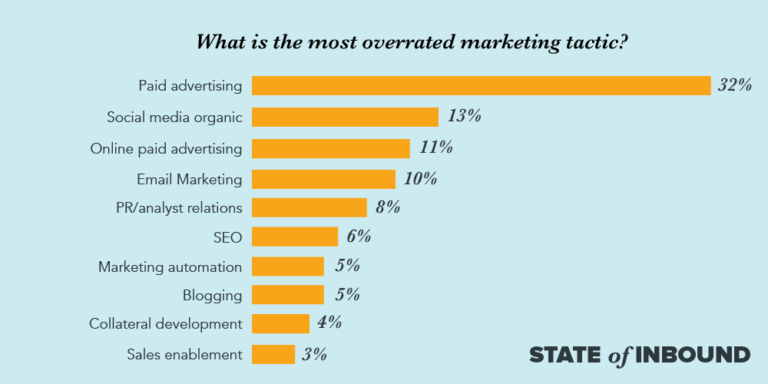Content-based marketing has become the gold standard for boosting brand awareness, reaching customers, driving web traffic, and increasing the bottom line. But there’s one area of content marketing that’s still in its infancy: video marketing.
Interest in video content marketing has grown as people’s preferences shift toward this dynamic medium. Businesses have naturally responded by allocating a greater portion of their marketing budgets to exploring and taking advantage of video, using it across social media, in ads, and on company websites.

In this guide, we walk through a number of video content marketing concepts, including defining the term and sharing benefits you can expect from video marketing. You’ll also learn about the types of videos you can produce, and even steps you can take to create a video marketing strategy of your own.
Chapter synopsis
Table of Contents
- Chapter 1: Introduction.
- Chapter 2: What is video marketing? We start by covering the basics of video marketing, including its importance and how it’s being used in practice. We also provide some useful tips on creating videos that just might help you go viral.
- Chapter 3: Benefits of video marketing. What good things can you expect from starting video marketing in your business? Results vary, but many companies that go down this road experience greater brand awareness and several other advantages.
- Chapter 4: Types of videos. Videos are dynamic media, offering you a lot of creative flexibility, which is why there are several different types of video you can produce. In this chapter, we cover six of the most common ones businesses use today.
- Chapter 5: How to create a video marketing strategy. Put what you’ve learned in the previous chapters to work with expert guidance on creating a video marketing strategy of your own. You’ll walk away with concrete steps that can help your business stand out from the crowd.
Remember to bookmark this guide for later reference. You never know when you may need to brush up on a few tips or try new types of videos you haven’t yet explored.
What is video marketing?
“They say a picture is worth a thousand words. But video allows you to say a lot more,” says Randall Harp, creator in chief at Chapel Hill Media. This idea captures the sentiment behind video marketing. To be more concrete about it, video marketing is a modern content marketing tactic businesses use to generate interest in their products and services.
Video marketing lets you communicate a lot more information to prospects and customers in less time than written content, and it helps audiences connect with your brand in a more engaging way. Below we answer a few questions to help solidify the concept of video marketing.

3 FAQs about video marketing
Why video marketing?
Harp calls out two key reasons why video marketing has become such a popular tactic for marketers:
- Culture shift. People tend to be visual, so it’s not surprising more people are choosing to watch instead of read since video is more commonplace today. Studies show that people receive and remember information better when it’s visual. “Plus, we live in a fast-paced culture where we’re very conscious of time, and reading takes more of it. That’s why video is such a great way to reach people rather than expecting them to sit and consume pages of text,” he explains.
- Technology. The ability to produce and consume video has become much easier thanks to easier-to-use creator tools, smartphones, and social media. “While high-quality, well-scripted videos are easier to make, not every video has to be a Hollywood production. You can use your smartphone to record, then quickly and easily upload it to any social platform,” he says.
How is video marketing being used?
While consumers tend to create videos for nonmonetary reasons, Harp notes that companies, of course, use video marketing to benefit their business. Specifically, they use it to
- Sell products. Many businesses use popular social platforms like Instagram, which focuses on visuals, to showcase their products. These social posts can then help drive people to a brick-and-mortar store or send them directly to an online shopping site.
- Increase brand awareness. Businesses can also use videos to promote their brand or corporate identity, though Harp says this is typically reserved for larger companies with equally large budgets — for example, Coca-Cola and Apple.
- Share information. Today’s digital landscape has spawned a knowledge culture that’s willing to pay for information. People such as Instagram influencers and business coaches often capitalize on this by engaging with viewers through videos and live streaming to create a following of people who may eventually convert to customers — purchasing courses, diet and exercise plans, sales training, and so on.
- Promote company culture. From a different perspective, businesses also use video marketing to attract new talent. By giving prospective employees a look behind the scenes, businesses can open the door to their company culture and spur a desire to work there.
Related: 14 Benefits of Video Marketing to Boost Your Company’s Sales
Tips for getting started with video marketing
If you’re just beginning your video marketing journey, Harp has several video marketing tips you can use to start off right:
-
Each video should have a clear purpose
To maintain clarity, always ask these three questions before making a video:
- Who is your target audience? Pinpoint your audience for each particular video. Be as specific as possible. For example, if you’re selling a diet plan, are you speaking to people with a particular health concern — losing weight, building muscles, developing six-pack abs, etc.? Knowing your audience makes it easier to both speak to them and measure the effectiveness of your video.
- What do you want them to feel? Stats are nice, but people likely won’t remember them. They will, however, remember how your video made them feel. Maybe you want them to feel hopeful, peaceful, energized, etc. This will spur them to the next part.
- What do you want them to do? Give them something to do, a next step. Make it as easy as possible. For example, have them call a number or visit a website — be sure to provide a URL to a page that talks specifically about what you covered in the video to maximize effectiveness. Get them in the pipeline and start them on the journey of becoming a customer.
Understand the importance of quality
“Many people don’t know this, but audio quality is actually more important than video quality,” Harp advises. People will endure bad visual quality over bad audio quality. If they can’t hear what’s being said, they lose patience quickly. But if a video has good audio and not-so-great visuals, people tend to be more willing to stay in hopes that the video will improve.
Be consistent
Make sure the videos you’re producing are consistent compared to one another and with your overall brand. For example, try to use the same intro for each video — the sound and style of graphics should be the same.
“This lends itself to the know, like, and trust factors of sales,” Harp says. “For example, consider how GEICO and Progressive insurance have used the same spokespersons for their companies for years. They often even use the same colors, sounds, props, wardrobe, and set for their videos.”
Now that you understand video marketing as a concept, let’s get into the benefits you can expect to receive from it.
For years marketers have been shouting, “Content is king!”
Why?
Because content has helped many companies bring in more business. And given the rise in video consumption in recent years — 55 percent of people view online videos every day — video might be the front-runner for favorite type of content.
There are plenty more stats where that came from, but in this chapter we’re looking at the reason those stats exist. So if you’re still on the fence about video marketing, the points below will ensure you’re aware of its upsides.

The importance of video marketing
“Video marketing gives you the opportunity to provide valuable information to businesses you want to work with,” says Ken Kerry, executive creative director at Script to Screen. This information may be answers to specific questions your target audience has, advice about unique challenges they’re facing, or even clarifications regarding myths that could be holding potential customers back from making decisions.
Kerry’s own video content marketing serves as a first impression of Script to Screen for a company that might be considering their services. His strategy is to provide content that not only shows his company’s capabilities (such as with an awareness video), but his team’s ability to address challenges or needs similar to the prospect’s (such as with a case study video).
“Our belief is that, by presenting our expertise with tangible business results first, we create the ability and the permission to explore how we can best serve new clients,” Kerry says.
Benefits of video marketing
Aaron Nix, assistant professor of art, video producer, and filmmaker, has helped conceptualize and create many videos. He calls out several key benefits of video marketing:
- Improved engagement. Video gives you the ability to engage your target audience using more than just words. Higher engagement translates to more people watching more of your video, extending their interaction with your brand. “With video, your audience is more involved. Instead of just reading or quickly scrolling past an image, you capture their attention and engage their senses for an extended period of time,” he explains.
- Increased brand awareness. “People are always looking to engage with other people’s stories and events. It’s a part of our social culture now,” he says. Since video is easily accessible in our media-saturated culture — live events, streaming, social media, etc. — people expect video and are drawn to it. While they may scroll past an image, video makes them pause. Using video gives you the opportunity to share your brand with more people, instead of being ignored.
- More compelling storytelling. “The more senses you can engage, the more interesting you can make the story,” Nix explains. Video is much more dynamic than text or still images, which means you can communicate complex subject matter in a simpler way and convey important aspects like tone. People connect with stories, so creating a compelling one can help endear people to your brand.
- Greater trust. “People are time-sensitive, so asking them to take even 30 seconds out of their day can be a big ask,” he says. If you’re able to give them something they like and engage with — whether it’s emotional, comedic, or something else — that builds trust with your brand.
Social media and video marketing
The average person spends 144 minutes per day on social media — nearly two and a half hours — and that number is trending upward every year. Is it any wonder that many experts recommend including social media as part of your video marketing efforts?
“People’s eyes are constantly on their feeds, but there’s a massive amount of noise people have to wade through every day,” Nix explains. In addition, the digital intelligence of the average user has increased as people become more social media savvy. They expect more from video, so getting your target audience’s attention requires a well-produced, extremely relevant social media video they can connect with.
Achieving ROI with video marketing
Video ROI comes in many forms — it really depends on the type of business you operate. Nix shares a few example goals:
- Recruiting people. Whether you’re looking to attract students, athletes, or employees, awareness is a big part of this goal, and it doesn’t always have clearly trackable metrics. Useful proxies are social media metrics, such as a growing following. You can also use more direct means like sharing a video on social that links to a landing page and tracking performance. “Notably, video engagement is typically higher than any other post type on our social media pages,” says Nix of the college where he works.
- Generating donations. Donations are a significant boon to nonprofits and colleges. A video/landing page combo comes in handy here, too, as you can share videos that speak to the causes donors care about. Nix says his college may share a video aimed at former students to elicit their support. “We typically have a specific campaign, such as for the annual day of giving, where we track performance for a specific class year to see how many responded versus donated.”
Now you know how you can benefit from video marketing. Next, we walk through the main types of marketing videos you can make.
Types of videos
We’ve discussed a lot of concepts about video marketing, but now we move into the really interesting part — namely, the main types of videos you can create. Each has unique attributes you should be aware of to maximize their effectiveness.
6 video content types
-
Educational
Educational videos provide your audience — typically people who are already your customers — with information about your products, such as technical details or how best to use them in different situations. These types of videos are often used by software-as-a-service (SaaS) companies to instruct users how to navigate through the product to accomplish a specific goal.

Lance Cummins, president of Anyvoo, explains that such tutorial videos are most effective when they
- Sound conversational. People are fine being led, but they don’t necessarily want to be instructed. Tutorials should make users feel like someone is helping them accomplish something, not like they’re learning a lesson. “A conversational tone aids in making the experience real and genuine,” Cummins explains.
- Employ screen sharing. When you can hold a product in your hand, it’s a lot easier to reference specific parts of it in, say, an instructional manual. However, SaaS products tend to have lots of screens that look nearly identical to the average user, so it’s important that users be able to follow along — screen by screen — with a guide. Cummins points out that the mouse should be visible and screens should load in real time, as opposed to cutting these transitions. “You want the user to have a real experience — like they hopped on a screen share with someone from your company who’s walking them through the task.”
Announcement
When your business has big news to share — for example, an upcoming merger or acquisition — this calls for an announcement video. However, Cummins cautions against focusing on your business as part of the presentation. “I’m a big proponent of framing any announcement to focus on the person hearing the message — your prospects, customers, and so on.”
When writing the script for your announcement, Cummins suggests that you ask yourself
- What is this news going to do for my audience?
- Why will they care?
- How does this help them?
“If you can’t answer these questions, then you should rethink doing the video in the first place,” Cummins says.
Product launch
Product launch videos can be considered a type of announcement video since they announce when you’ve created or redesigned a new product, whether it’s tangible, such as a new car model, or intangible, like software. Whatever the case, your goal is to generate interest in your product. “You do this by helping your audience picture themselves using or experiencing what you’ve created,” Cummins says.
He recommends producing a series of product launch videos, rather than just one. Multiple videos help people see a product from different perspectives, as well as consistently expose them to your product.
“Avoid just listing out features you think they’ll like, for example, the fact that a new line of glasses is made from Titanium. Instead, focus on evoking emotions from your audience — for example, they may want to feel smart. Make a clear connection between those emotions and your product,” says Cummins.
Company culture
Company culture videos are typically used to provide an inside look at your business — how the business works, what employees think about working there, etc. These videos can also be used to engage current employees at workplace events. “If you’re showcasing your company culture at an annual get-together, by all means brag on yourself and share inside jokes.”
In contrast, Cummins notes you should take a different approach if your company culture video is meant to help recruit new employees: “As with announcement videos, your culture video should focus on how your company culture would benefit a newcomer in the organization. And be sure that, when people speak, they are conversational. You don’t want anyone to sound like they’re reading from a teleprompter — it comes off as stiff.”
Q&A
Q&A videos give you the opportunity to address questions from users or prospects. For example, you may get a lot of questions from customers on ways your product can be used. You can quickly collect and keep track of these customer questions with JotForm, an easy-to-use form builder.
Cummins recommends setting up Q&A videos interview style, with one person asking questions and the other one answering. To make the video more dynamic, you can place text on either side of the scene.
“This will help emphasize the question being asked,” Cummins says. “It will also help viewers who are watching the video for a specific question to easily find what they’re looking for.”
Case study
Case study videos enable you to showcase how your organization has helped past clients overcome a particular challenge. For example, this case study video walks through how one JotForm client uses the platform to make her workflow easier — from collecting client consent forms to collecting client payments.
“With case study videos, you definitely want the client to be a part of it,” Cummins advises, though that may mean you give up some degree of control. Still, the value in having a client speak to your organization’s capabilities will go a long way.
In addition, case study videos can be a boon to video email marketing. If you use email as a marketing tactic — cold outreach, automations, etc. — incorporating a case study video can help elicit a reply.
With the different types of videos covered, we’ll discuss creating a video marketing strategy.
How to create a video marketing strategy
Developing a video marketing strategy isn’t too different from developing other marketing strategies, but the underlying medium naturally creates some distinctions — after all, video requires more time and money to produce than text or images. We discuss these distinctions below, along with steps you can take to develop a video marketing strategy of your own.

5 steps to creating a video marketing strategy
-
Define your business objective
-
Understand your target audience
-
Identify distribution channels
“When you first start thinking about video, stop thinking about video. Instead, think about what you’re doing as a business,” says Robert Weiss, president of MultiVision Digital. Are you launching a new product? Are you moving into a new line of business? Your video goals should support these initiatives.
For example, you wouldn’t want to focus on corporate overview or culture videos if you’re announcing a new product — your spend should go to product launch videos. “Video works best when it’s integrated into a thoughtful plan. And that plan can certainly evolve over time as your objectives change,” notes Weiss.
As with any marketing-focused effort, knowing who you’re speaking to is critical. You’ve no doubt already defined your target audience, but ensure you have an in-depth understanding of who they are and what they want.
According to Weiss, knowing your audience inside and out is important for your production efforts and the costs associated with them. “It’s about added efficiency,” he says. “You can output multiple videos that speak to different audience segments while using the same basic video components. Just make a few changes and you have a whole new video — without scheduling a whole new shoot.”
For example, consider an insurance company that wants to produce videos featuring experts talking about insurance. The information will be largely the same, but different customers look for specific insurance products or coverage.
“The company can share the same insurance knowledge, but change up the talking points and visuals to focus on aspects that newlyweds or retirees care about most,” Weiss explains.
The where of your video marketing strategy is another important component. You have to decide how best to reach your target audience with your videos. “The exact mix of distribution will differ depending on your business and the types of videos you make,” explains Weiss.
Here are a few channels you may decide to use:
- Streaming platforms (Netflix, Hulu, etc.)
- Social media (Facebook, Instagram, YouTube, etc.)
- Google Ads networks
- Your website
Develop a video production budget
“I recommend starting small. You can test a monthly budget of around $1,000 until you’re satisfied with the results,” says Morten Storgaard, creator of PassiveIncomeGeek. Then build up from there. A good video marketing budget is one that gives a promising return. As you add more to your budget and keep testing, you can further refine the idea of good and acceptable ROI.
As far as what you’ll need to consider, Weiss calls out a few key elements:
- Time and talent to write the script
- Cameras and other equipment
- Production and editing time
- Motion graphics and color correction
- Labor and experience of the crew
Create your videos
Video branding is essential to establishing yourself with your audience. Make sure to include elements like your logo, slogan, and brand colors within the first five to 10 seconds of each video, especially if the video is an ad.
Remember that users can typically skip video ads after a few seconds, or scroll past them on social. “Unlike traditional video ads for TV and streaming platforms, you can’t afford to tell the story first and then expect the viewer to watch to the end to find out who you are,” Storgaard explains.
Also consider video SEO optimization to ensure your content is ranked and seen. Weiss says one video likely won’t cut it — you’ll need several, just like with blog posts in traditional content marketing. And speaking of content marketing, Weiss notes that adopting a video-first strategy can help achieve greater video optimization: “This strategy is about creating content for video, then turning that content into supporting blog posts, social media images, emails, and so on.”
Creating your own video marketing strategy may seem like a big challenge, but the above guidance should give you a great foundation to start.
Meet your video marketing guides
Aaron Nix
Aaron Nix currently serves as an assistant professor of art and video producer at Concordia University, Nebraska in Seward, where he leads courses in film production, film criticism, digital media, and photography. Through his freelance work, Nix has written and directed award-winning films and produced successful ad campaigns for clients nationwide.
Ken Kerry
Ken Kerry is the executive creative director at Script to Screen. Ken cofounded the company in 1986, along with his wife, Barbara. Together, they built Script to Screen into one of the nation’s leading direct response television companies, producing more than 600 infomercials and DRTV spots, generating more than $6 billion in sales for clients and winning numerous awards for excellence.
Lance Cummins
Lance Cummins is the president of Anyvoo, a scrappy maker-startup that helps remote workers revolutionize the way remote work is seen by handcrafting simple, professional video call backdrops. He’s also the president of Nectafy, a growth content agency that helps clients attract new business.
Morten Storgaard
Morten Storgaard is an online marketing veteran and creator of PassiveIncomeGeek. He has a background in e-commerce and has worked with large and small brands to establish awareness and drive sales online.
Randall Harp
Randall Harp is the creator in chief at Chapel Hill Media. He has a diverse background in fine arts, film scoring, and software development for a variety of industries. With his experience, Harp creatively tells the stories of businesses through video — driving the production of strategic video assets, including scripts, storyboards, voice-overs, music, and motion graphics.
Robert Weiss
Robert Weiss is the president of MultiVision Digital, a video content marketing company. He got started in video production and marketing nearly a decade ago and has produced over 800 videos addressing a wide array of business objectives.






